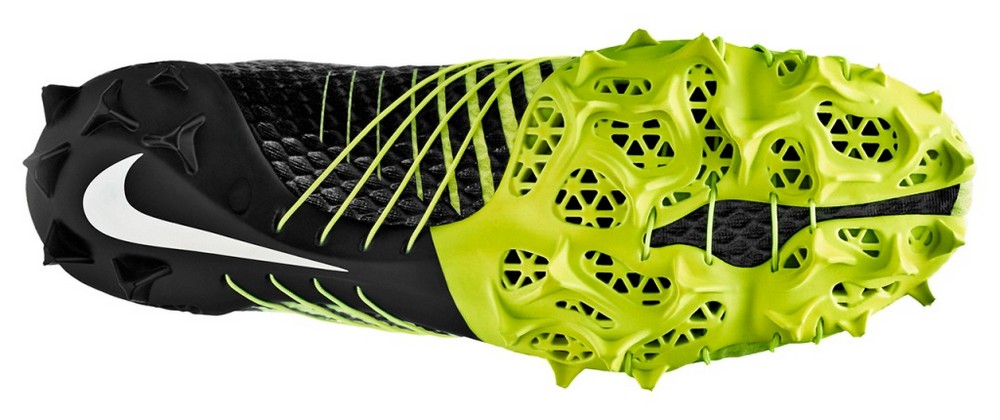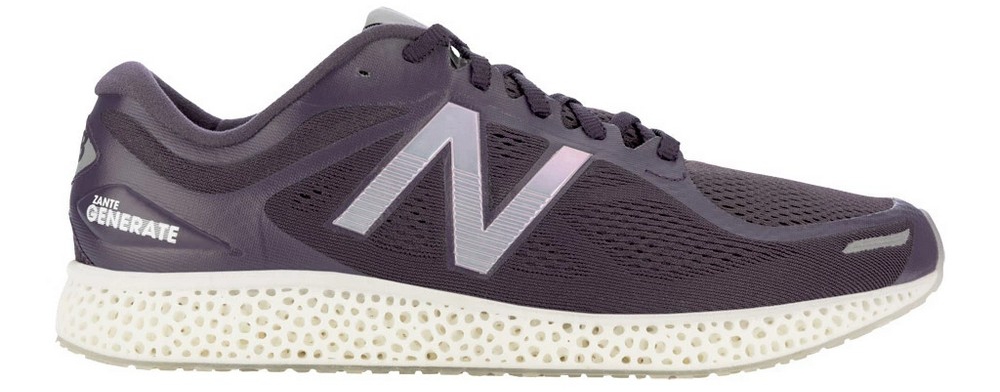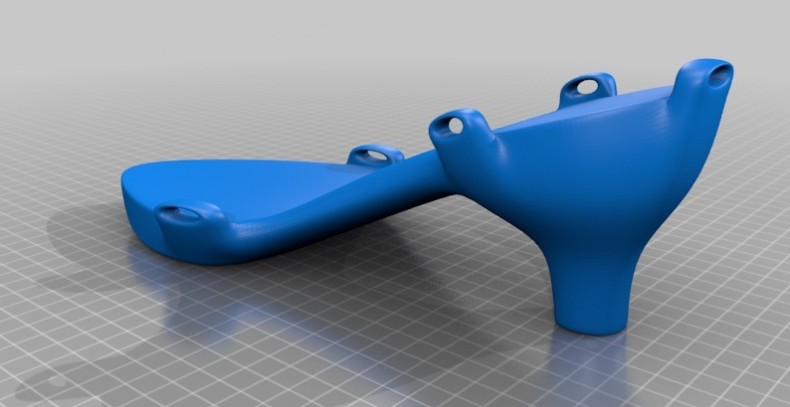3D printing in shoe manufacturing

Recently, we talked about the use of 3D printing to create orthopedic insoles , the material was brought back from Formnext 2017 , and there we saw a prototype of the Adidas sneaker with a 3D printed sole. This is an interesting topic, dive into it a little more.
The largest manufacturers of sports shoes invest serious time and money in the development of methods for the use of 3D printing in the shoe industry. Companies such as Reebok, Under Armor, Adidas, Nike and New Balance actually show what they see in the future of the 3D footwear industry.
What is it, advertising and public relations on the hype raised around additive technologies, or sober calculation and a look into the future?
Let's try to figure it out.
Under armor
3D printing company EOS North America Inc and Under Armor have joined forces in the development of commercial production of 3D-shoes.

The EOS North America and Under Armor partnership helps Under Armor scale their 3D-printed footwear business.
The use of laser sintering technology, as well as the use of EOS experience in industrial 3D production, will allow developing the Under Armor shoe business. Together they intend to work on the composition of new powders and the development of sintering technology.

Under Armor plans to use EOS technology for 3D printing of powder shoe parts.
To emphasize their partnership, on Formnext 2017, the companies together demonstrated the new UA shoes - ArchiTech Futurist.
Nike
Nike also develops shoes using 3D printing technology. In 2017, Footwear News wrote:
<< 3D-printed shoe parts, insoles and soles of Prodways, made of thermoplastic polyurethane (TPU), are used to accelerate the manufacture of sneakers and increase their consumer properties.
Although Nike has not yet announced the mass production of 3D printing footwear, company executives highly appreciate the potential of Prodways materials and 3D printers to improve the quality of footwear and increase production speed. >>

Nike uses 3D printing in prototype development, working with the French company Prodways.
Nike has already created 3D-printed shoes, even though they were non-serial products for professional athletes.

For example, in 2013, the company introduced, and in 2014, released 3D-printed football shoes and sneakers for running.

New balance
New Balance released running shoes in 2016 with a fully 3D printed Zante Generator sole.

Zante Generate - New Balance running shoes with a fully 3D printed sole, created with the participation of 3D Systems.
Cooperating with 3D Systems, NB used DuraForm powdered thermopolyurethane for 3D printing of sneaker parts. The soles were printed using the SLS technology, the test batch consisted of 44 pairs.
Reebok
Reebok is no stranger to 3D printing; back in 2016, the company introduced its new technology Liquid Factory 3D.
The first one created using 3D printing of Reebok sneakers was called Liquid Speed.

The chemical giant BASF is cooperating with the Reebok Future team, which is responsible for the introduction of new technologies at Reebok, which developed the 3D printing polymer used by the company.

Reebok, head of development, Bill McInnis, says:
“The shoe industry hasn't changed much for thirty years. In the creation of each shoe, every brand known to you, casting was used - an expensive and lengthy process. With Liquid Factory, we want to change the way shoes are created by introducing a new non-casting production method.
With this process, we can create the entire boot by programming a robot that will draw it, layer by layer, from a high-strength liquid material. So it turns out the sole with completely new properties, much more elastic than the traditional rubber soles of sneakers, and more precisely transmitting momentum. Liquid Factory creates sneakers that stretch and wrap around the foot, providing it with bulk support from all sides. >>
The company did not stop at that. Together with the Modla design studio, they developed the Modla X Reebok 3D, a 3D printing mask for training athletes.

The polymer part of the mask, in the design of which the Ultimaker 2 FDM printers were used for prototyping , is manufactured using EOS 3D printers using the SLS technology.
In the manufacture of internal parts, silicone, and soft parts of the mask, from material Flexweave, laser cutting was used .
The mask is designed to limit the access of air, which increases the load on the lungs and contributes to the training of endurance of the body as a whole. The load is adjusted by turning the front of the mask, which switches the silicone valves inside.

The following functionality is not stated, but - we think that, with some minor refinement, the mask will also serve as a respirator from urban dust, which is so much in the air in hot weather.
Adidas
In 2017, Adidas announced a partnership with Carbon, which is based in Silicon Valley .

One of the main brands in the promotion of 3D printing in the shoe industry, Adidas, collaborates with Carbon, applying a 3D printed sole made using their Digital Light Synthesis (DLS) technology to the Futurecraft 4D model.
Together they created the Futurecraft 4D 3D printing insole. This is not only an interesting technical solution, but also an actual topic - the number of Instagram mentions is growing.


Marvel Comics Hero Black Panther.

Canadian model Adrianna Ho.

Sneakers sold from mid-February, cost about $ 300.
Digital Light Synthesis is a Carbon process that uses breathable optics, digital projection, and photopolymer resins with predetermined parameters in the production of durable polymer products. Futurecraft 4D is the first Adidas DLS application.

DLS gives products strength and elasticity. According to Carbon, their unique technology will provide unprecedented durability, strength and elasticity of 3D-printed products. Adidas is going to release one hundred thousand pairs of shoes using this technology by the end of 2018.
This is not the first Adidas experience with additive technologies. A few years ago, the company collaborated with experts from Shining 3D in developing the Springblade sneaker model.

Adidas management was quite an experiment and was going to continue cooperation with Shining 3D, but something did not work out - we no longer heard about their joint activities, only the mention of Adidas on the Shining 3D website, among the partners, remained.
Do it yourself
Some plain shoes can now print themselves any holder of a conventional FDM-3D-printer . Even the simplest Prusa will do for these purposes , as can be seen on this video:
Pets slippers , soles for shoes , the shoe upper for the costume (Cosplay or carnival). Thingivers and other 3D model sharing resources are full of such projects.

https://www.thingiverse.com/thing:980191

https://www.thingiverse.com/thing lower97498

https://www.thingiverse.com/thing:1178775

https://www.thingiverse.com/thing:2314052

https://www.thingiverse.com/thing:1587947
Real works of art come across .

Of course, the strength and convenience of such homemade products is a big question, but this is only the beginning.
findings
As you can see, in spite of the raised advertising hyip, quite working models are created that often surpass the shoes made by traditional methods, not only in consumer properties, but also in manufacturability.
3D printing in shoe manufacturing gives less weight to the shoe, more opportunities to change the elasticity and stiffness, due to the complex internal structure of the print, plus - the widest field for designing and inventing new forms that could not be created using traditional methods.
Considering that the main players of the sports footwear market have been developing for the first time in this direction, it is hoped that the 3D-printed footwear will soon become publicly available.
Order 3D printingYou can in Top 3D Shop - rich experience, wide choice of materials and a large fleet of equipment allow us to fulfill any order.
Want more interesting news from the world of 3D technology?
Subscribe to us in the social. networks:




